By GEORGE W. WHITESELL Times Staff Correspondent
SAN CARLOS, Dec. 18.—Announcement of the first contract upon a new tape recording process that probably will revolutionize the broadcasting industry was made here today by the Ampex Electric corporation, which said that the contract has been completed with Crosby Enterprises, Inc., headed-by radio's foremost personality, Bing Crosby.
Final completion of the contract was made by Crosby's brother and business manager. Everett Crosby, and T. I. Moseley, owner of the Dalmo-Victor corporation. Moseley and A. M. Poniatoff are the largest stockholders in Ampex corporation. A quartet of men at the local plant, Forrest Smith, manager; Charles McSharry, office manager; Harold Lindsay and Myron Stolaroff, engineers, jointly made the announcement of the perfection of the tape recording device which will be distributed by Crosby Enterprises with the entire first year's output already sold to the American Broadcasting Company.
A demonstration of the new recorder, a shining 900-pound cabinet with two quietly whirring 35-minute tape reels on its top, left auditors breathless. Music and voices reproduced on the thin, brown plastic tape were more real than the sound of music or persons standing in the same room.
An uncanny, almost ghostlike effect in which the actual breathing of musicians and singers could be detected marks the tremendous almost ''open-end" sound range of the reproduction which also has-hitherto hidden qualities in the middle-register of sound made electrically, audible for the first time. It is the highest fidelity ever achieved by electrical engineers.
Also new to recording is the ability of the tape to be reduplicated or "dubbed" without any loss in fidelity. A re-recording may be made by the machine from its own tape in an infinite progression of times without any loss whatever, where ordinary disc recording loses nearly 20 per cent of quality on each successive re-recording. The tape moves through the recorder so fast that it may be slowed down for editing, splicing and "dubbing" without the splicing being audible, thus uncovering a big short cut for all radio transcription.
Crosby's interest in the new process stems from his own decision, made over a year ago, to record all of his programs instead of making "live"' broadcasts. This object was endangered by quality losses in recording until last summer when Crosby began to record his shows on German-built tape machines which had been improved by the W. A. Palmer company of San Francisco. These tape recordings were placed upon wax transcriptions for distribution and use by the American Broadcasting company and its affiliated stations. Starting in 1948, the entire Crosby show will be recorded on the far more advanced Ampex recorder. These shows will also be re-transcribed to wax discs, probably until April, when it is hoped that high fidelity stations will have sufficient Ampex equipment to allow broadcasts directly from the tape.
Engineers Lindsay and Stolaroff, who have developed the new process, say that the effects of the new high fidelity transcription will he readily apparent on existing radio sets of the AM type and even better on FM broadcasts. Both said that the average AM home radio is capable of much better reproduction than present broadcast signals will allow. Smith said that a chief worry now, here as well as throughout the entire broadcast industry, is what effect the recording ban set for January 1 by Caesar Petrillo and his national musicians union will have upon transcribed broadcasts. "We don't know the answer here," said Smith. From Los Angeles, however, today comes word that there is close liaison between Everett Crosby and Petrillo.
The Ampex instruments have been experimentally recording the Crosby broadcasts since October, it was revealed, and Bing Crosby was said to have personally ordered the connection between Ampex and Crosby Enterprises.
One of the astonishing effects of the new recordings in revealing full quality of spoken voices will probably cause top-flight radio announcers to change their methods of speech. The unctuous, richly furred voices of the announcers will have to approach more closely the normal since the exaggerated characteristics developed for present radio sound "over-done and silly" under the new recording process.
Smith said that the present plans of Ampex will be limited for the first year to production of high precision recording and play-back machines with an initial order of 500 of these to be completed. This, he said, cannot be done under normal mass production methods because of the precision elements involved. He said that the San Carlos plant will employ about 30 highest type electrical workers on the production.
Meanwhile the Ampex plant here is tapering off on production of electric motors for airplanes. It has been engaged in this work since war days when the plant was also busy in making radar parts. Smith estimates that a switch-over to the recording device manufacturing will start in about four weeks.
The plant is located at 1155 Howard street in San Carlos. Smith said that the research on the recording device has been under way for more than a year. He also said that production of home recorders on a mass basis is under consideration but that it will be at least a year before this field is entered.
Here are my old friend, Dennis “Wiz” Leonard’s tech notes on the recording of the Grateful Dead’s great live album, “Europe ’72”. Most of my blog is my own writing, but I asked Wiz if I could share this, and he graciously said, “yes”. This is the clearest explanation of how Alembic did live recordings that I’ve ever seen. Wiz now works at Skywalker Sound…he went way big league!
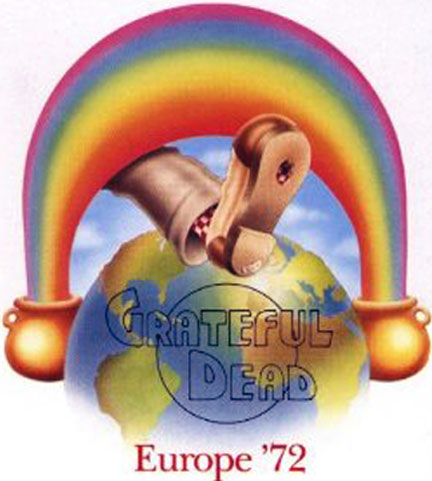 Dennis Wiz Leonard Europe ’72 Technical Liner Notes By Dennis Leonard
Dennis Wiz Leonard Europe ’72 Technical Liner Notes By Dennis Leonard
“Less is more!” This was the motto of Alembic and many of the sound artists in the S.F. Bay Area’s growing community of folks trying to advance the state of the art in both “live” and “recorded” sound for rock ’n’ roll. One can hardly mention this philosophy to recording without touching on the Alembic PA system and its unique qualities.
The new paradigm for live sound: the Alembic PA. In 1964 The Beatles played at Shea Stadium using a circular array of Vox Grenadier Column speakers, a box quite similar to the Shure Vocal Master Column. This approach to sound for a stadium was doomed even if all the girls did not scream. Fast-forward to ’67-70 and things were not much better.
The Alembic PA was the first really hi-fi approach to a live system. It had direct radiator low-frequency elements rather than horn-loaded boxes, which were the standard. It was an electronically crossed-over three-way system using McIntosh MC-75, MC-275, and MC-3500 vacuum-tube amplifiers and Ampex MX-10 vacuum-tube mixers as the front-of- house console. It eventually evolved into the famous Wall of Sound. This was a philosophic approach, brainchild of The Bear, put together by some of the most talented engineers in the Bay Area, and the same philosophy was applied to the task of recording bands.
Alembic Recording did not have a truck to pull up to a venue. We had gear, and we often built a studio at the venue in a room somewhere backstage. Sometimes we would haul the gear to the gig in a rental truck, then unpack and build the studio for the gig in the truck, take it apart when we were done, and take it back home.
Recording Europe ’72 was a monumental task, and we came up with a great solution to building a truck which we could fly airfreight to and from Europe. A video-production company was letting go of a pair of cargo containers built for them to ship a portable video-production remote unit by airfreight. This was perfect—when set back-to-back, these two rode in the top of a 747 airfreighter. Each container was built around a reinforced floor, the sides and top latched on and off.
 We moved all of the components of our Ampex MM1000 16-track into a video chassis that put all 16 sets of AG-440 electronics down below the transport which was then on a 45 degree angle. This was not only more robust, but it was also going to allow us to run 14-inch reels. This took place in an all-night marathon. When we started, Ron Wickersham was not sure all of the original cabling would work. We were lucky it did! At around 5 am, the new machine was rolling; no cables needed to be cut or spliced from the original wiring loom!
We moved all of the components of our Ampex MM1000 16-track into a video chassis that put all 16 sets of AG-440 electronics down below the transport which was then on a 45 degree angle. This was not only more robust, but it was also going to allow us to run 14-inch reels. This took place in an all-night marathon. When we started, Ron Wickersham was not sure all of the original cabling would work. We were lucky it did! At around 5 am, the new machine was rolling; no cables needed to be cut or spliced from the original wiring loom!
Another obstacle was that the capstan speed in an MM1000 was derived from line frequency. Ours was a 60-Hz machine and we were going to 50-Hz land. Ron came up with a solution which would also solve another problem down the road: He built a precision 60-Hz crystal oscillator; we drove a McIntosh 275 vacuum-tube amplifier and picked off a tap on the output transformer, which would give us 120 volts with enough current to run the capstan motor at our precise 60 Hz/15ips, also now 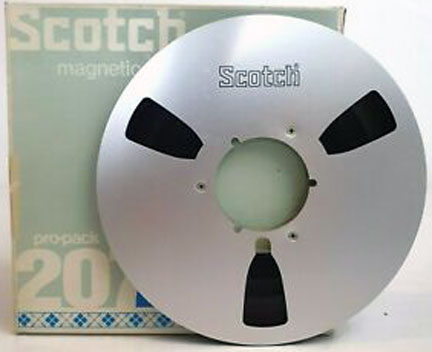 immune to line-frequency fluctuation.
immune to line-frequency fluctuation.
The other problem arose when we tried to get Ampex to give us their 207 tape on 14-inch reels. Ampex 207 had a thinner backing; instead of the traditional 30 minutes one got out of a 10.5-inch roll, 207 would give us 45 minutes, so a 14-inch reel was going to run 90 minutes—very desirable when recording a band with long sets, like the Dead. Ampex would not build the reels; we had to do those ourselves. Remember, we were running the recorder’s capstan on an oscillator, so for building the reels we hooked up a variable-frequency oscillator. We would ramp the machine up to 60ips to pack the tape.
Each of the 14-inch reels had a splice in it. Ron and Sue Wickersham and I spent a few nights at Alembic having a 14-inch- reel-building party.
The recording rig was quite simple: “less is more.” We recorded the Dead quite often, so a lot of what we did for Europe ’72 had been tested and proven.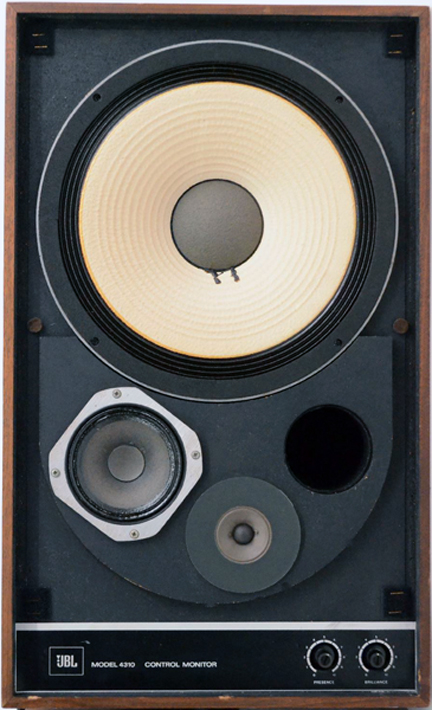
We built the rig at Alembic. One of the newly procured containers had the 16-track and an outboard equipment rack, the other . . . a custom built cabinet which was our tape library, and this cabinet also had our monitor console, Revox two-track, cassette machine, and Orban reverb units mounted on top of it. A carpenter met us at Heathrow airfreight in London. When the gear arrived, we took the sides and tops off of the two containers (which were left there in storage for the tour) and had them forklifted into our rental truck for the tour. The container floors were about ten inches high, so after the two were in the truck, the carpenter secured them andbuilt us a filler floor so that the recording truck would not have a split- level floor.
We wired the truck up and hung drapes and the 4310 JBL monitors, as well as many other things at the first show venue, Wembley Arena.
The flow of the rig, starting inside the venue, consisted of the following:
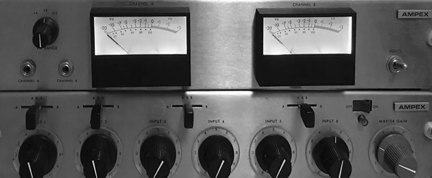 Two nine-pair snakes plugged into a custom Alembic split. AC from the stage ran to the truck with the two nine-pairs. Once inside the truck, the AC power was conditioned in an automatic, motor-driven variac made by General Radio. This was to, hopefully, prevent severe voltage fluctuation. The split plugged into the rack, which held a patch bay and minimal gear. We had a couple of Ampex MX-10 tube mixers and some limiters. The limiters, by the way, were used only on vocals for our monitor mix; we did not want to do anything to the vocals on the 16-track record master.
Two nine-pair snakes plugged into a custom Alembic split. AC from the stage ran to the truck with the two nine-pairs. Once inside the truck, the AC power was conditioned in an automatic, motor-driven variac made by General Radio. This was to, hopefully, prevent severe voltage fluctuation. The split plugged into the rack, which held a patch bay and minimal gear. We had a couple of Ampex MX-10 tube mixers and some limiters. The limiters, by the way, were used only on vocals for our monitor mix; we did not want to do anything to the vocals on the 16-track record master.
One of the big “less is more” philosophic bits of Alembic magic was the use of transformers in the input section of the MM1000. Ampex offered modules which plugged into an octal socket on the back of each 440 record amplifier. We used these sockets for the transformers, which would allow us to take microphone level right into the tape recorder, totally passive—no electronic noise added and no record console electronics to fail.
The MM1000 fed a very small, 16-track Alembic monitoring console built by Ron. Janet Furman was our technical engineer and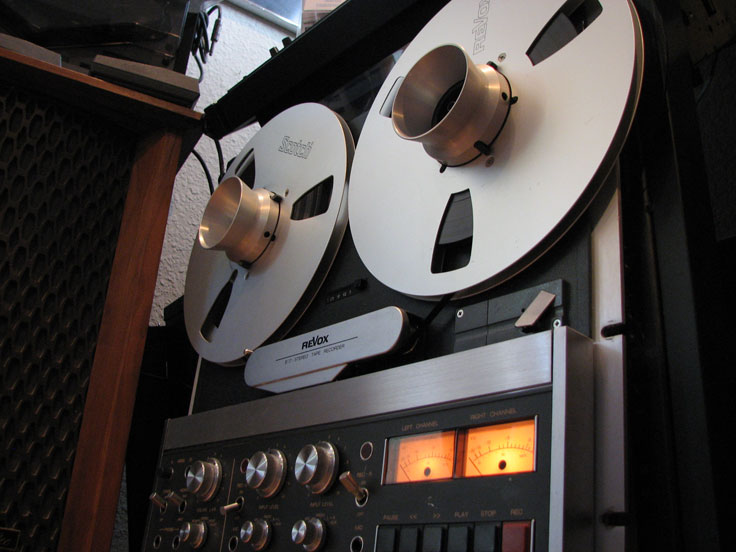 not only fixed things, but also set up the 16-track to the custom equalization we were using with the thinner-backed Ampex 207 tape. We could monitor, solo, and build a two-track mix on this. We recorded to a Revox B77 and a Sony cassette machine, and we also had some pretty simple spring reverbs for our two-track mixes.
not only fixed things, but also set up the 16-track to the custom equalization we were using with the thinner-backed Ampex 207 tape. We could monitor, solo, and build a two-track mix on this. We recorded to a Revox B77 and a Sony cassette machine, and we also had some pretty simple spring reverbs for our two-track mixes.
Shows seemed to generally fit on two 14-inch reels and a ten-inch reel or two. Tape changes were quite interesting: We did not have a lot of room and had practiced this quite a bit, and it took three of us to do this at high speed. In an effort to not run out of tape during a performance, we had an indicator-light system of communication. Under Jerry’s monitor wedge there were three small lamps mounted on a piece of wood. The lights could be lit from the truck. A green, yellow, and red light: Green = we are rolling and in record; yellow = if you can wind it down and stop, we need to change tape; red (if, in fact, the band did stop for us) = changing tape, not in record.
This, of course, did not fit in with the way the Grateful Dead worked. There were not going to be any rules. Early in the tour, I tried a “yellow,” asking for a possible wind-down of the jam so that we could change tape. Even though this had been an idea we had discussed Stateside, Jerry was having no part of it! As I switched on the yellow light, I looked at Garcia on our 13-inch B&W TV monitor. He looked up at the camera, knowing I was watching, and simply smiled and nodded no in a very friendly way. Don’t fuck with the music!
We did some tape changes while the band was playing. We really did not want to interfere with the flow of the music.
I was in the truck for the tour, parked in front of the Ampex 16-track. Since we had no record console in the path to tape, the 16-track itself was actually the only place to make any level adjustments, so with our custom MM1000, all 16 of the AG440 record amplifiers were clustered together in two stacks of eight, easy to keep an eye on. Betty Cantor did our live two-track mix in the truck; she was around eight feet away. The band really had no set lists in those days, so as the show went down, I would write one on each of the tape boxes. Bob Matthews was at front of house. We would chat on our intercom after songs, and he, Betty, and I would decide how many stars to give a song: Three stars meant it was a really good performance! The star system was used when we got back home in order to focus on candidates for the Europe ’72 album.
to make any level adjustments, so with our custom MM1000, all 16 of the AG440 record amplifiers were clustered together in two stacks of eight, easy to keep an eye on. Betty Cantor did our live two-track mix in the truck; she was around eight feet away. The band really had no set lists in those days, so as the show went down, I would write one on each of the tape boxes. Bob Matthews was at front of house. We would chat on our intercom after songs, and he, Betty, and I would decide how many stars to give a song: Three stars meant it was a really good performance! The star system was used when we got back home in order to focus on candidates for the Europe ’72 album.
Twenty-two shows in two months (57 days) is a vacation tour. The current tour-booking standard is to average 4.5 shows a week, and the Grateful Dead Europe ’72 tour was booked at around 2.5 shows per week. It does not get much better! Although it was an amazing time, with many days off, we took recording this tour very seriously and there was no relaxation on a show day at all.
It was a high time for everyone. The music was just amazing and for me not seeing any of it except on a small B&W TV was OK. I did, however, get inside on the last night. Due to circumstance, I was alone in the truck. We had, only minutes before, put a fresh 14-inch reel up and had 1.5 hours before the next tape change. A microphone onstage needed attention and I had to go inside. I did this with a bit of trepidation; I really did not want to simply leave the truck, but no one else was available and the mic needed to be fixed. The band was in a spacey jam and was very unlikely to produce levels which would be a problem on tape.
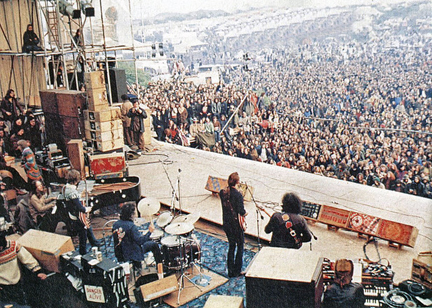 I locked the truck, went inside, and quickly fixed the bad mic, which was just a bit loose on its stand. As I went for the stairs to leave, the band dropped into “Morning Dew,” which has always been a favorite tune of mine. I decided to stay. Dynamically, the levels in the truck—which was now “running itself”—were going to be fine, and I had to stay! I parked myself behind Jerry’s rig for the song, a time I will absolutely never forget.
I locked the truck, went inside, and quickly fixed the bad mic, which was just a bit loose on its stand. As I went for the stairs to leave, the band dropped into “Morning Dew,” which has always been a favorite tune of mine. I decided to stay. Dynamically, the levels in the truck—which was now “running itself”—were going to be fine, and I had to stay! I parked myself behind Jerry’s rig for the song, a time I will absolutely never forget.
Fast-forward to Alembic Studios, 60 Brady Street, San Francisco. The band is choosing the final songs for the album. I am walking down the hall towards the control room. Jerry bursts out, very animated as he catches me, “Hey, Wiz. Guess what? ‘Morning Dew’ from the Lyceum is for sure going on the album.” (Big smile from Jerry.) He says, very emphatically, “And no one was in the truck!” (Bigger smile.) The Grateful Dead’s music was built on taking chances, embracing the unknown, letting serendipity have its hand. So the fact that, while no one was in the truck, a true pearl was recorded was not unusual at all! It was just an affirmation that we were letting the muse guide us in an invisible and mysterious way.
The tour was a truly magical time. It changed my life forever! If I were to be marooned on an island with only one piece of music I could ever listen to, “Morning Dew” from Europe ’72 would be it. Jerry’s solo says it all!
Oh… One more anecdote, I got back to SF after a quick trip to Vermont to get my dog Zach… Got back to Alembic in time to meet the gear, we were now at 60 Brady street… Big M (Bob Matthews) grabs me and says, “Hey remember we had to fast wind some tapes off, so I want you to play the tour, the whole tour, so all the reels are playback packed at “Tails out” the control room is yours” So I said, “hey I’ll just live here till it’s done, ok?” Big smile from Big M… What a drag, I had to play the whole tour, update thoughts (Star System) on quality and I put another pair of 4310’s in the back of the control room and played the room miss through them… (Surround sound) sat and did a live mix for I am not sure how long, I would play and sleep, sleep and play… But it was pretty constant… Stop every show to clean the heads….. Then I moved up to Fairfax and really slept..

